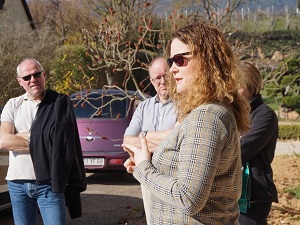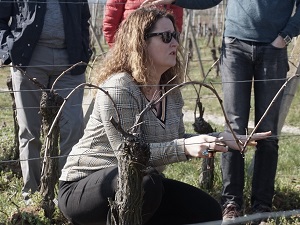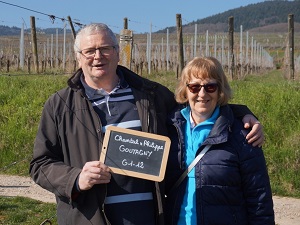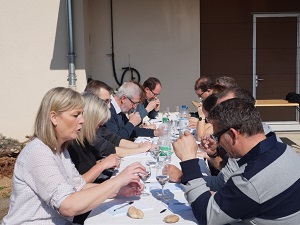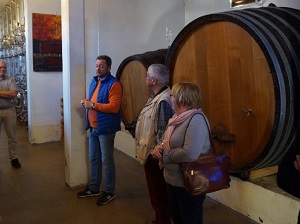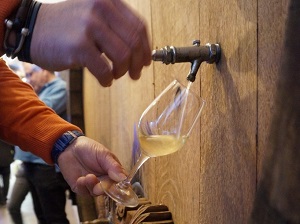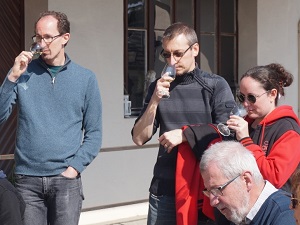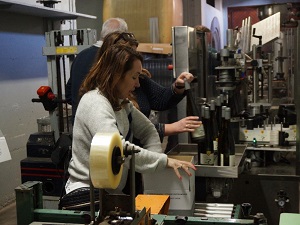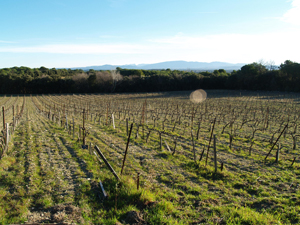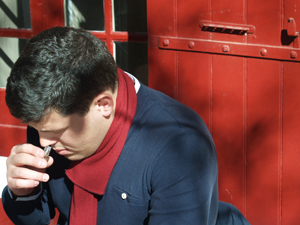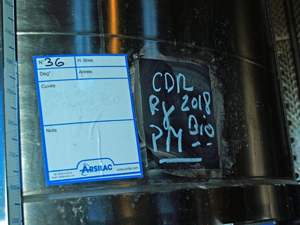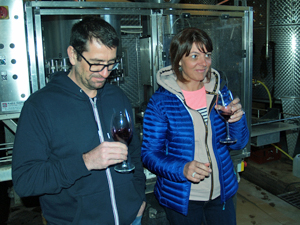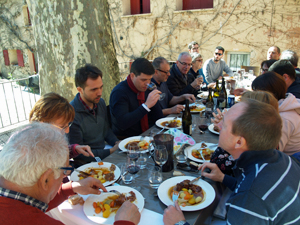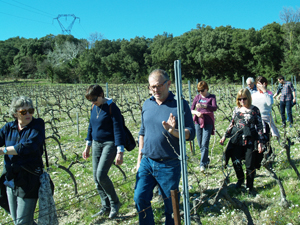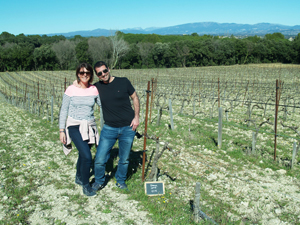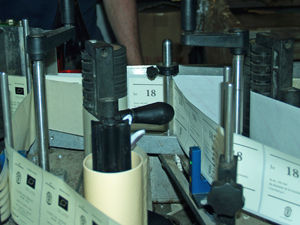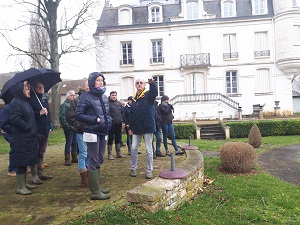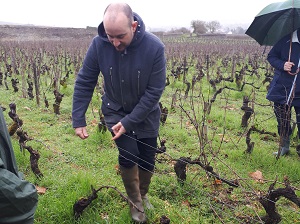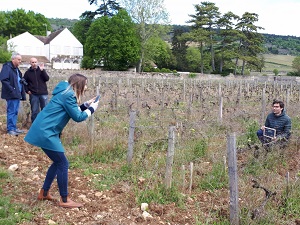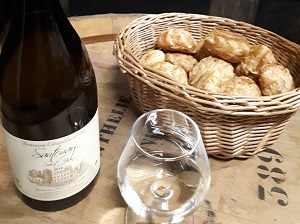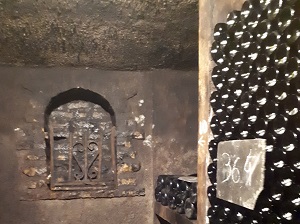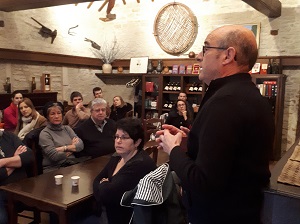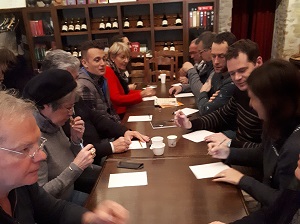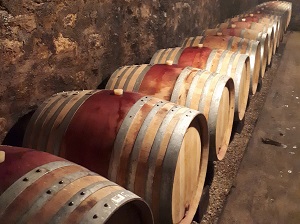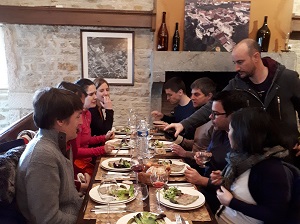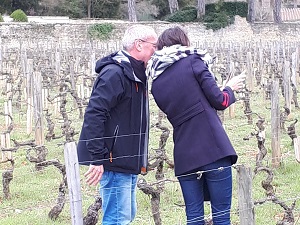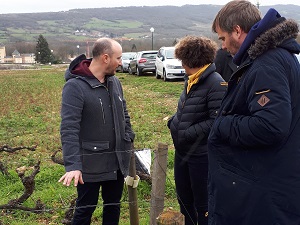We spent an excellent week-end in Chinon for a Vinification Experience Day where we would learn about all of the work and skill that enables the winemaker to transform the grape juice collected at harvest time into wine, and then age it until it is ready for bottling.
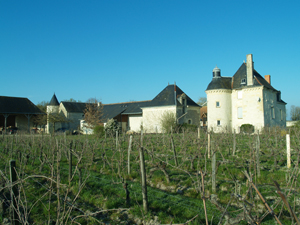
After a welcome over coffee and croissants, Marc Plouzeau, the winemaker and owner of Château de la Bonnelière, took us to the fermentation hall. Here he explained how the grapes are received at harvest time and put into the vats. At Château de la Bonnelière, the grapes from each vineyard are kept separate for the most part to make a range of wines that express the different terroir.
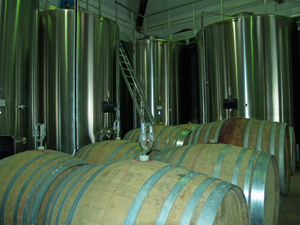
We discussed how the grape juice ferments to produce wine, and how Marc monitors and controls the process to try and produce the best quality wines.
Marc then took us to the hall next door where we saw the bottling and labelling machine that is used at the end of the process, once the wines are finally ready.
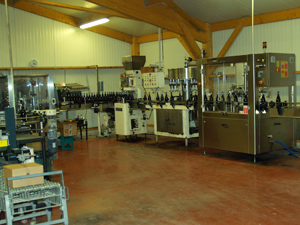
The Vinification Experience Day is a fascinating day when we get the chance to taste wines that are still in the ageing process. To help prepare us, we participated in a workshop to develop our wine tasting skills, which included a fun game to try and identify different aromas that can be found in wine.
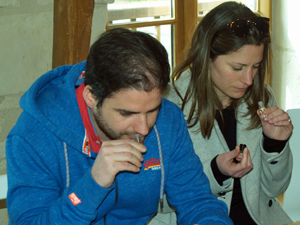
We then headed outside to the Clos de la Bonnelière vineyard that surrounds the château. This is where our adopted vines are to be found, and so we took a few minutes to find them and take some photos!
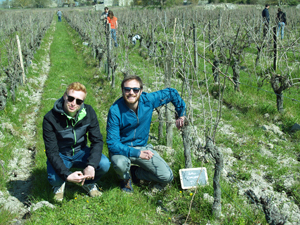
The wines at Château de la Bonnelière are aged in the cellar that is located directly underneath the Chinon Fortress in one of the galleries where the stone had been extracted to build the castle above. So we transferred to the cellar, where a glass of the winery’s Perle Sauvage naturally sparkling white wine was awaiting us.
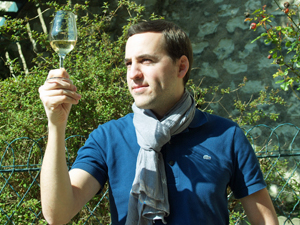
We then sat down to a delicious lunch prepared by a local caterer and friend of Marc’s, during which we tasted the 2017 Silice Chinon white wine, and the 2018 La Roche, 2017 Clos de la Bonnelière and 2016 Chapelle Chinon red wines.
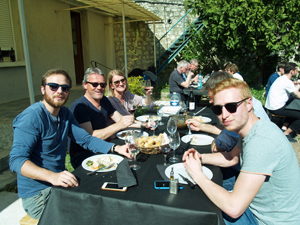
After lunch Marc explained the role of the barrels in ageing wine, and the perfect conditions that his cellar provides. He also explained a brief history of the cellar, and how it was excavated, entirely by hand.
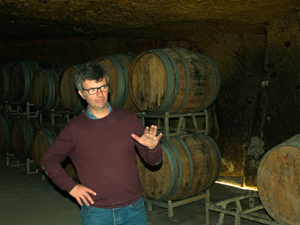
We ended the day with a tasting of different wines to better understand the work of the winemaker in ageing and preparing the wines for bottling. The first wine was the same La Roche 2018 wine that we had tasted over lunch, the only difference being that it had been drawn from a vat, and had not yet been prepared for bottling. We could taste that it wasn’t quite as polished, and still had some residual gas in it that Marc will remove before it is bottled.
We then tasted a second wine that was richer and more complex. The second wine was the 2018 Clos de la Bonnelière, which is the wine that the 2018 vintage Gourmet Odyssey clients will receive next year. The main difference between the first two wines was the way in which they are aged. The former in stainless steel vats, and the second in oak barrels.
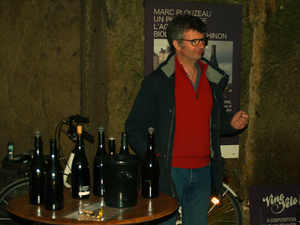
The third wine, the Chapelle, is aged in the same way as the Clos de la Bonnelière, but was darker in colour and more intense, the difference arising from the terroir where the grapes used for the Chapelle wine are grown.
The fourth and final wine was different again which a much more tannic structure. This wine was the Vindoux Intégrale, a wine that Marc makes whereby the grapes are put directly into a large barrel at harvest time, the wine staying in the barrel throughout the fermentation and ageing phases.
All of the wines were made using the same grape varietal, Cabernet Franc, but it’s amazing the range of tastes and aromas that can be found depending on the different terroir or choices that the winemaker takes when making and ageing his wines. A fascinating day and a great insight into the life of a winemaker. Many thanks to Marc for sharing his passion with us.
Follow this link to find out more about the Gourmet Odyssey Wine Experience



